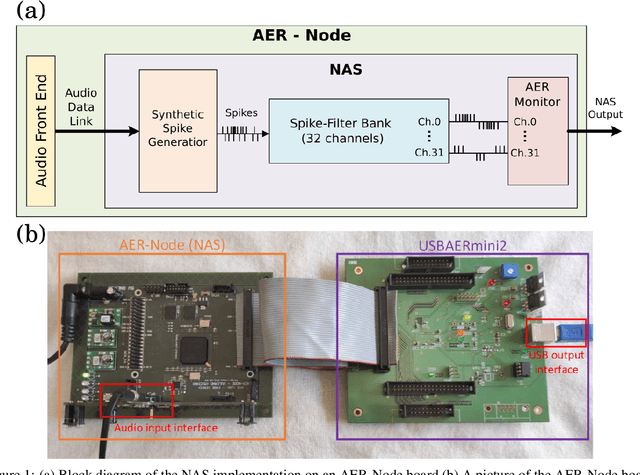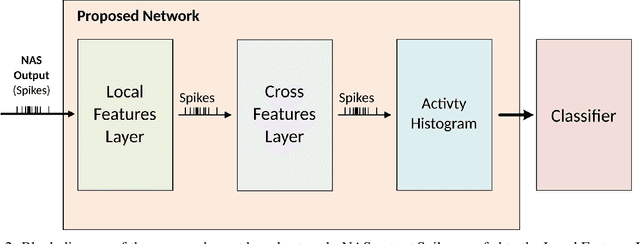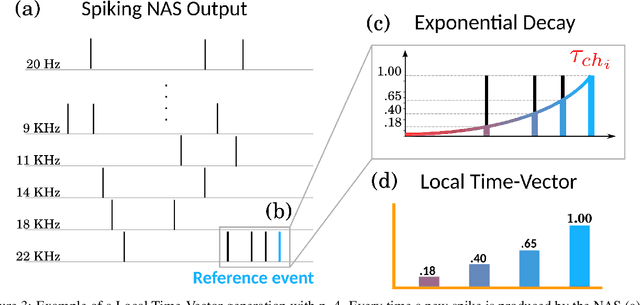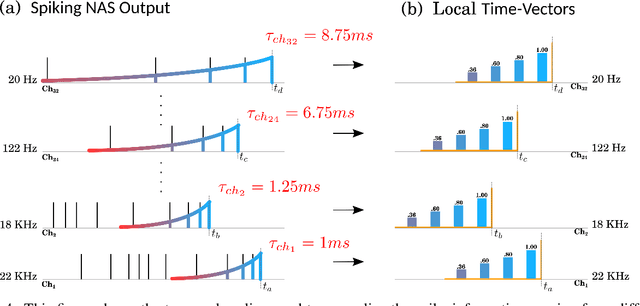Marco Rasetto
Sup3r: A Semi-Supervised Algorithm for increasing Sparsity, Stability, and Separability in Hierarchy Of Time-Surfaces architectures
Apr 15, 2024Abstract:The Hierarchy Of Time-Surfaces (HOTS) algorithm, a neuromorphic approach for feature extraction from event data, presents promising capabilities but faces challenges in accuracy and compatibility with neuromorphic hardware. In this paper, we introduce Sup3r, a Semi-Supervised algorithm aimed at addressing these challenges. Sup3r enhances sparsity, stability, and separability in the HOTS networks. It enables end-to-end online training of HOTS networks replacing external classifiers, by leveraging semi-supervised learning. Sup3r learns class-informative patterns, mitigates confounding features, and reduces the number of processed events. Moreover, Sup3r facilitates continual and incremental learning, allowing adaptation to data distribution shifts and learning new tasks without forgetting. Preliminary results on N-MNIST demonstrate that Sup3r achieves comparable accuracy to similarly sized Artificial Neural Networks trained with back-propagation. This work showcases the potential of Sup3r to advance the capabilities of HOTS networks, offering a promising avenue for neuromorphic algorithms in real-world applications.
Event Based Time-Vectors for auditory features extraction: a neuromorphic approach for low power audio recognition
Dec 13, 2021



Abstract:In recent years tremendous efforts have been done to advance the state of the art for Natural Language Processing (NLP) and audio recognition. However, these efforts often translated in increased power consumption and memory requirements for bigger and more complex models. These solutions falls short of the constraints of IoT devices which need low power, low memory efficient computation, and therefore they fail to meet the growing demand of efficient edge computing. Neuromorphic systems have proved to be excellent candidates for low-power low-latency computation in a multitude of applications. For this reason we present a neuromorphic architecture, capable of unsupervised auditory feature recognition. We then validate the network on a subset of Google's Speech Commands dataset.
 Add to Chrome
Add to Chrome Add to Firefox
Add to Firefox Add to Edge
Add to Edge